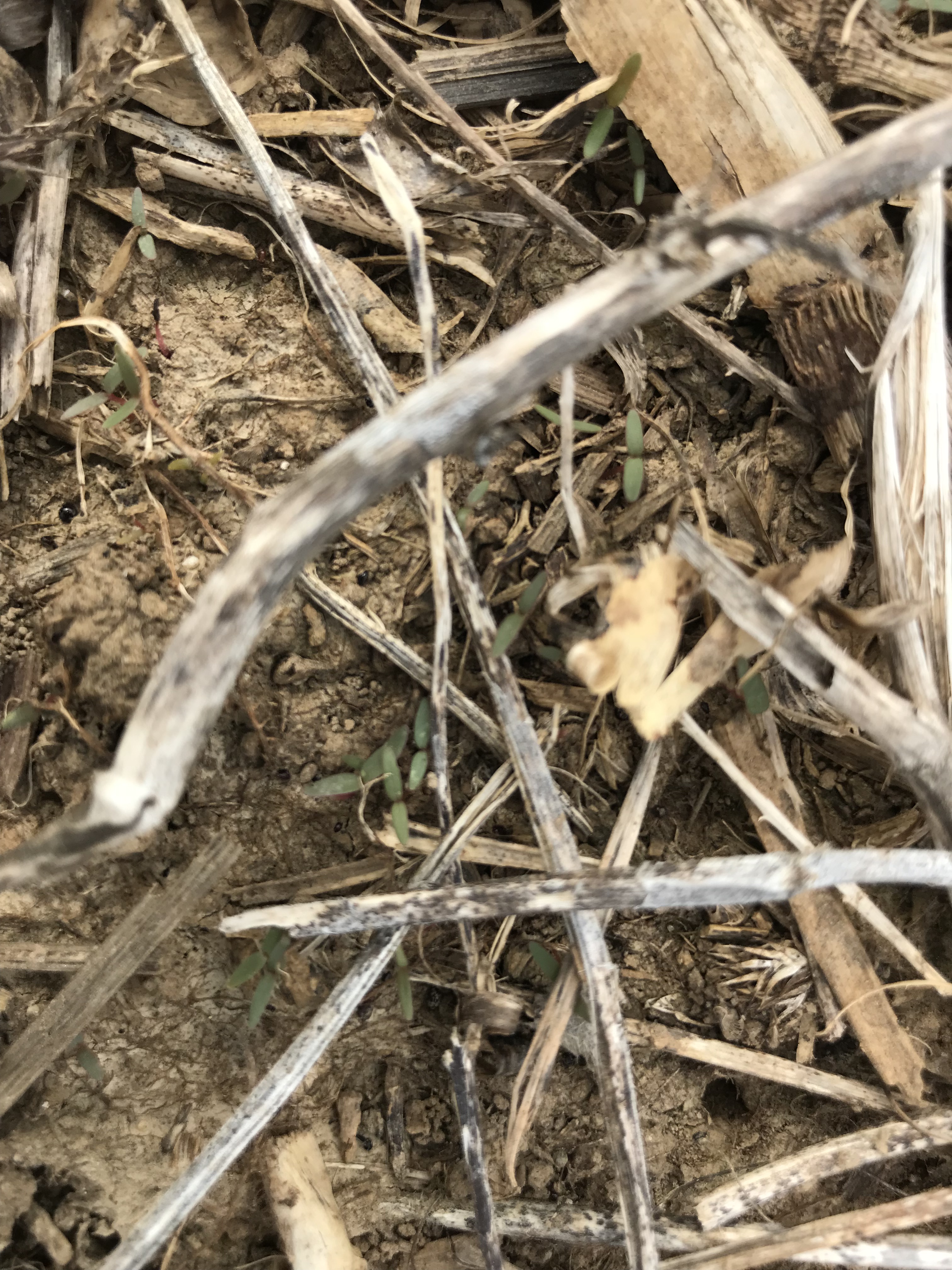This weather pattern has Palmer amaranth management in a terrible fix for many fields in West Tennessee. The rain that has occurred on an almost daily basis for over a week in many areas has delayed early POST herbicide applications. The forecast for rain into June looks to be a similar pattern. There will likely be a very small window to spray until the first week of June for numerous fields. Palmer amaranth is growing quickly and now is often in the 1 to 3” range where a PRE was used and 10 to 14” range in fields where no PRE was used. Continue reading
All posts by Larry Steckel, Extension Weed Specialist
Managing Large Palmer Amaranth in Large Corn
Judging by our research here as well as field visits and phone calls from folks walking corn fields it is very apparent that pretty much any PRE applied herbicide in corn has given out. Even some of the PRE applied herbicides that traditionally have provided consistently long weed control like Acuron or Bicep have given out about 25 days after application. In a few fields I visited today clearly no PRE was applied to the corn and Palmer amaranth jungles were very evident in the fields. After visiting these fields I will take a PRE that has given out any day. Continue reading
Destroying a Poor Corn Stand to be Planted Back to Soybean or Cotton
Clearly the most frequent call the last few days of April and the first half of May has concerned corn replant. All through early May the calls have been on how to destroy a partial stand of corn and replant back to corn. In just the last few days the question has been on how to remove a poor stand of corn and then plant back to soybeans or cotton. Continue reading
Scout Cotton and Soybean Fields Planted Last Week for Palmer Amaranth
I have gotten numerous reports of Palmer amaranth becoming established in fields where PRE applied herbicides were not activated by timely rainfall. Indeed I have seen some in my research as well. There were many acres of cotton and soybean planted May 7 to May 14. The rain that was in the forecast for last week was a no-show. The result is many of the PRE applied herbicides sprayed on all those cotton and soybean acres was not activated. This has led to a large flush of Palmer amaranth to emerge with the cotton and soybean in a good number of fields in Tennessee. Continue reading
Enlist Stewardship Critical in 2018
There was about 20,000 acres of Enlist cotton planted in Tennessee in 2017. Visiting with Extension agents, retailers and farmers this spring it is clear that there will be many fold more acres of Enlist cotton planted in 2018 compared to 2017. Continue reading
Applicators Must Have a Copy of 24c Label for Engenia or XtendiMax
It is my understanding that applicators when they apply Engenia or XtendiMax must have on hand a copy of the 24c label for those herbicides. A hard copy is preferred. Baring that a downloaded copy on to your Ipad, tablet or phone would be better than nothing. Trying to down load a copy on to your phone as the TDA inspector pulls into your field is not recommended. The links so you can down load, print a copy and read before you go spray is:
Engenia http://www.cdms.net/ldat/ldDG8026.pdf
XtendiMaxTN xtendimax 24c label Continue reading
First Palmer Amaranth Just Emerging

Palmer amaranth started emerging in West Tennessee just over the past few days. The first pigweed I noticed emerging was on April 30. This late emergence is very different from past springs. Continue reading
Soybean Residual Herbicide Consideration
Residual herbicides will play a large role in the success or failure of our weed control program in 2018. Last year a number of folks used Engenia plus Roundup followed by Engenia plus Roundup as needed in soybean. That will lead to failure if not in the short term certainly in the long term. Continue reading
